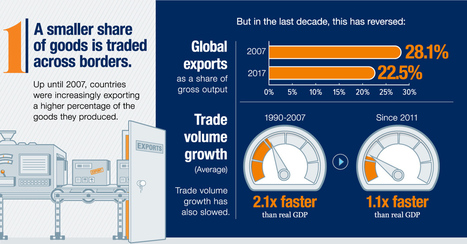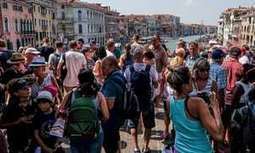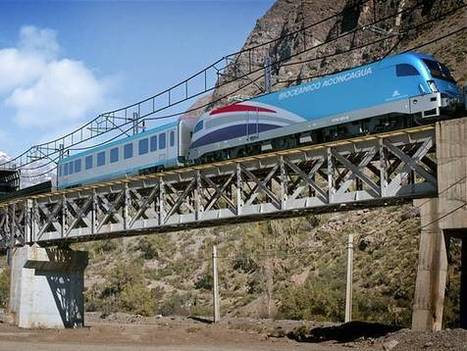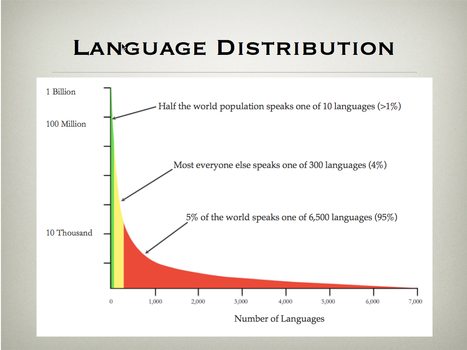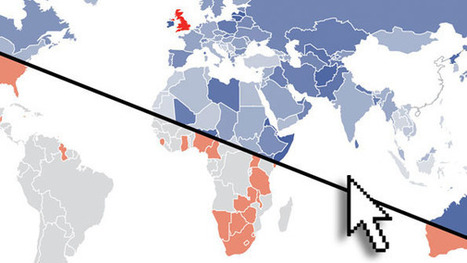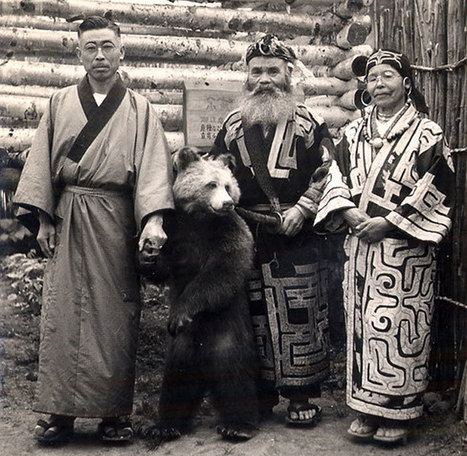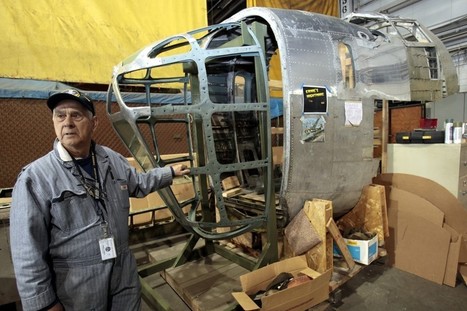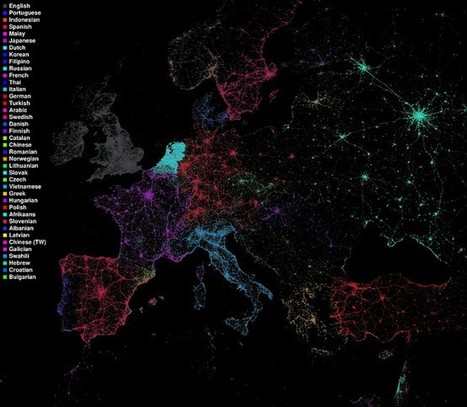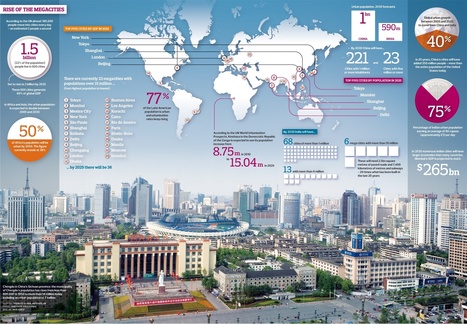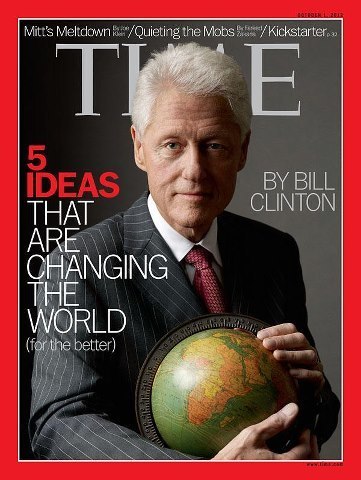Evidence is growing that the nature of globalization is changing dramatically - and the countries, companies, and workers that benefit are changing as well.
Get Started for FREE
Sign up with Facebook Sign up with X
I don't have a Facebook or a X account
 Your new post is loading... Your new post is loading...
 Your new post is loading... Your new post is loading...
Mark Hathaway's curator insight,
October 1, 2015 8:19 AM
If this project can be accomplished, it would truly be one of the greatest engineering feats in human history. To build a railroad tunnel through the Andes mountains seems impossible, but in all likelihood with the right amount of funding, it can be done. The tunnel would have great economic benefits for both Brazil and Argentina. Goods from both countries could be shipped in both directions with out any issues. The larger world would also benefit from the train tunnel. It is estimated that the tunnel would lower the shipping costs from East Asia to the Southern Atlantic. The entire global trading market would benefit from this development.
Adam Deneault's curator insight,
December 7, 2015 12:44 PM
Doing something such as this is a brilliant move in engineering. Making a tunnel through the Andes will connect countries together, make shipping much easier and doing so may cut the cost of goods being shipped and received. Just like the Panama Canal increased the cargo freight lining industry for shipping, this will also increase an industry for railways,.

Matt Danielson's curator insight,
September 29, 2018 5:18 PM
This is a massive construction project, probably the largest and most expensive project undertaken in South America since the Panama Canal. This would be a joint venture between a few countries with construction mainly taking place in Argentina's Andes mountains. This would make trade far cheaper in South America by opening up a new passage through the mountains instead of over them(which are impassable in winter snows) or around the southern tip of the continent ( which is a much farther journey). This would make the transportation and hence cost of goods drop drastically making them more widely available to the people. At the same time this would greatly open access to Asian markets and products. Overall it is my personal belief that this railway could help to bring prosperity to Suth America.
Lona Pradeep Parad's curator insight,
May 29, 2014 11:38 AM
How fb has made physical distance obsolete, connecting cultures to different cultures on a global scale.
Adam Deneault's curator insight,
December 14, 2015 8:22 PM
Wow! All I can say is Wow! Shanghai overall in every way is highly indistinguishable from what it was in 1990. On the far side it is minimally developed and on the close side it has what looks to be a fairly modern city for the 90s. Take a jump twenty years and it is as if it was built the way it looks currently Even the side closest that was developed in the 90s, looks like it was scrapped and rebuilt to be even more modern, a mega city. Because of its strategic location and has a river for transportation, it is a transportation hub, which is why it has the money to do what it does.

Alex Vielman's curator insight,
December 15, 2015 12:46 AM
These two images are perhaps a goo example of how globalization has developed over Shanghai in just 20 years. The images show how once greener and more spacious the region looked before in 1990, and the other image shows how technology has developed and become an important priority to the people. There are huge tall buildings located in the area and the other natural source seen is the body of water surrounding some of the tallest buildings in the area. There is no longer any trees which is also a sign of how un-important or how simple to was for the Shanghai to knock them down to simply make more buildings. The concept shows how business has developed in the region but also shows the potentially jobs located here as well. Overall, this part of Shanghai is very economically stable but it is also important to see outside of the heart of the buildings. 
Matt Chapman's curator insight,
April 26, 2018 12:21 PM
Shanghai's growth over the last 20 years is remarkable and astounding. Globalization has come to China and China has grown vastly over the years, this is good and bad. Pollution and waste is a problem with large cities but it also shows wealth and prosperity.
Brittany Ortiz's curator insight,
September 10, 2014 3:16 PM
A fun way for people to interact with there online closet and see how the world ties into our clothes!!

Aliah Therese's curator insight,
April 3, 2016 9:48 AM
I Its not just artists that reach struggle with certain issues. |

geofoodgraz's curator insight,
December 15, 2012 4:35 AM
Seth Dixon, Ph.D.'s insight:
"This series of maps shows the great leaps and bounds that were made during the 19th century in transportation technology in the United States. This impacted population settlement, economic interactions and functionally made the great distances seem smaller. This is what many call the time-space compression; the friction of distance is diminished as communication and transportation technologies improve.
Questions to Ponder: When someone says they live "10 minutes away," what does that say about how we think about distance, transportation infrastructure and time? How is geography still relevant in a world where distance appears to becoming less of a factor? "
Wilmine Merlain's curator insight,
November 1, 2014 7:54 PM
With the development of modern equipment useful in maneuvering around the world, the time it took those living in the 1800's has been reduced to getting anywhere around the world with time spanning from 30- 24hrs. This of course has been made possible due to the development of roads, better boating constructions and air travel.
Michael Mazo's curator insight,
December 10, 2014 8:12 PM
Since 1800 the rate of travel has increased exponentially through the years. From the very beginning of travel, it would take close to a week just to get from the east coast to the middle of the United States. Through the use of railroads we have overcome the "time" factor and essentially eliminated it from playing a role in the way we travel. Today's advances in transportation has made seeing others much easier and most importantly it has developed a connected world that allows for transport of goods and services possible to such an extent that as citizens of the United states we are able to access almost anything we need from a day to day basis. A technology like this will continue to expand and grow to make the life of people that much easier.
Emily Bian's curator insight,
October 3, 2014 5:13 PM
This is a thematic map showing the different languages spoken on Twitter in Europe. This Europe thematic is really neat to look at, but it also shows globalization in that Twitter is everywhere, and people are more connected because of it. This increases interactions between people living in different countries, and even different continents. 3) language and communication This will help future APHUG students, because Twitter is relatable to a lot of teens and it will open their eyes to the different languages spoken across Europe and the world, and it's not just English. It connects them to the rest of the world.

Al Picozzi's curator insight,
September 9, 2013 12:06 PM
More and more people are moving to the cities than ever before. As a result I believe there are more megacities on the way. However I think there is a limit to these cities. How are they going to be powered? How are the people going to be fed? Where will they work? how will these cities impact the environment? Where is all the fresh water going to come from? 
Kenny Dominguez's curator insight,
December 12, 2013 12:26 AM
It is a good thing that there is more megacities being created because you can see more people move in which will help the city function better economics wise. When it comes down to the population that is a different story because there is more people to worry and deal with. The increase of people could go both ways because it can be good but at the same time it can go bad because people will start arguing in which it can get physical which means city ratings going down.

Maria la del Varrio's curator insight,
December 5, 2014 11:06 AM
I hope the production keep growing up. We need more chocolate and specially in Africa. 
Brendan Cooke's curator insight,
August 16, 2016 11:16 PM
This artical is about the origin of where cocoa beans are harvested from and sent to around the world. It also adds the amount of cocoa beans harvested in each area.It is a quick overview of where the transportation of cocoa beans starts. The page is an excellent site for quickly reviewing where cocoa beans are grown and transported from. The site is relevant to my page because it informs the reader of where cocoa originates and the quantities it's farmed in.
Tennille Houghton's curator insight,
August 28, 2016 3:22 AM
this is just about the production and how its changed from where it originally comes from

Kenny Dominguez's curator insight,
November 29, 2013 11:59 AM
This is a great website in which everyone should look at because it shows how everyone can come together and help preserve all these languages we all hear today. Day by day languages are becoming extinct because they are speaking English one of the most spoken languages in the world and everyone speaks it or speaks little of it that people can understand. More languages are becoming extinct day by day. |




